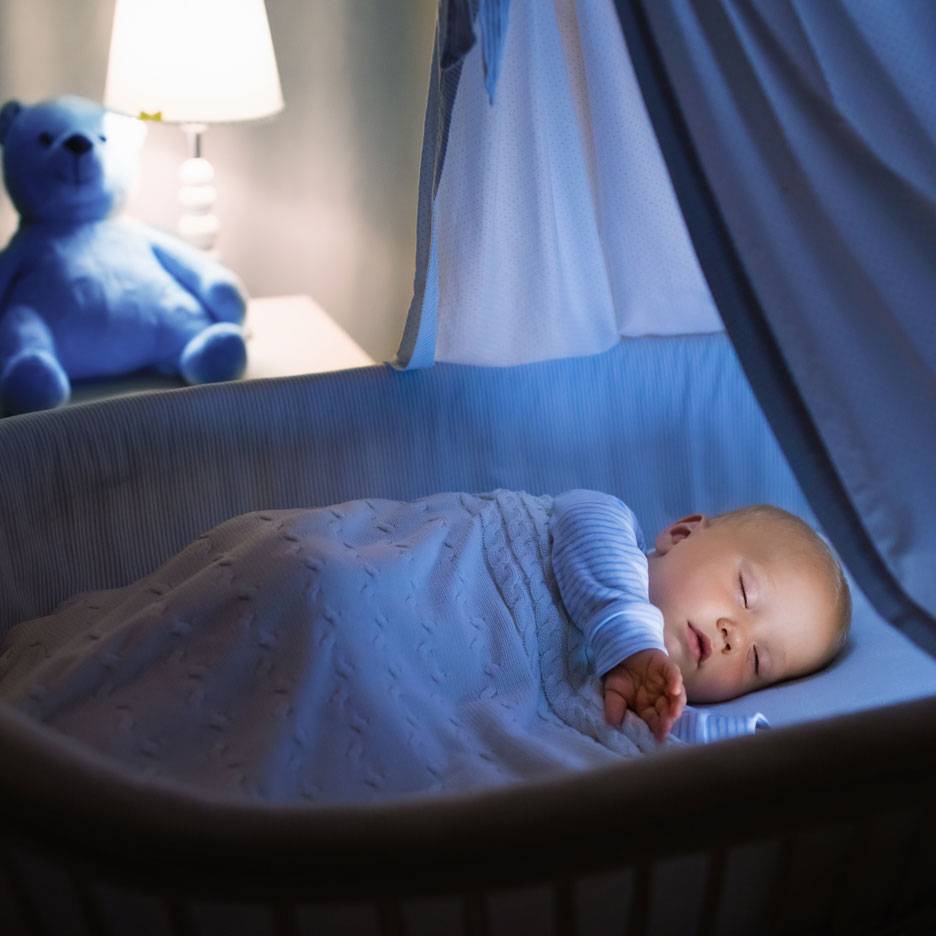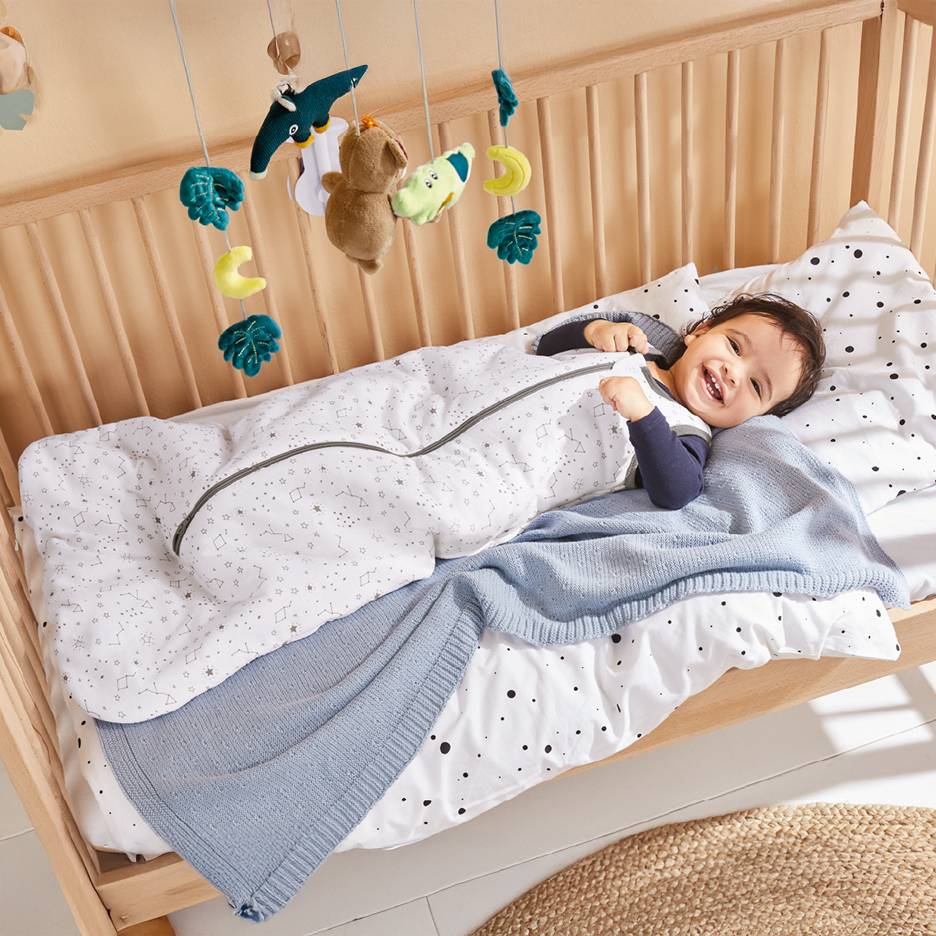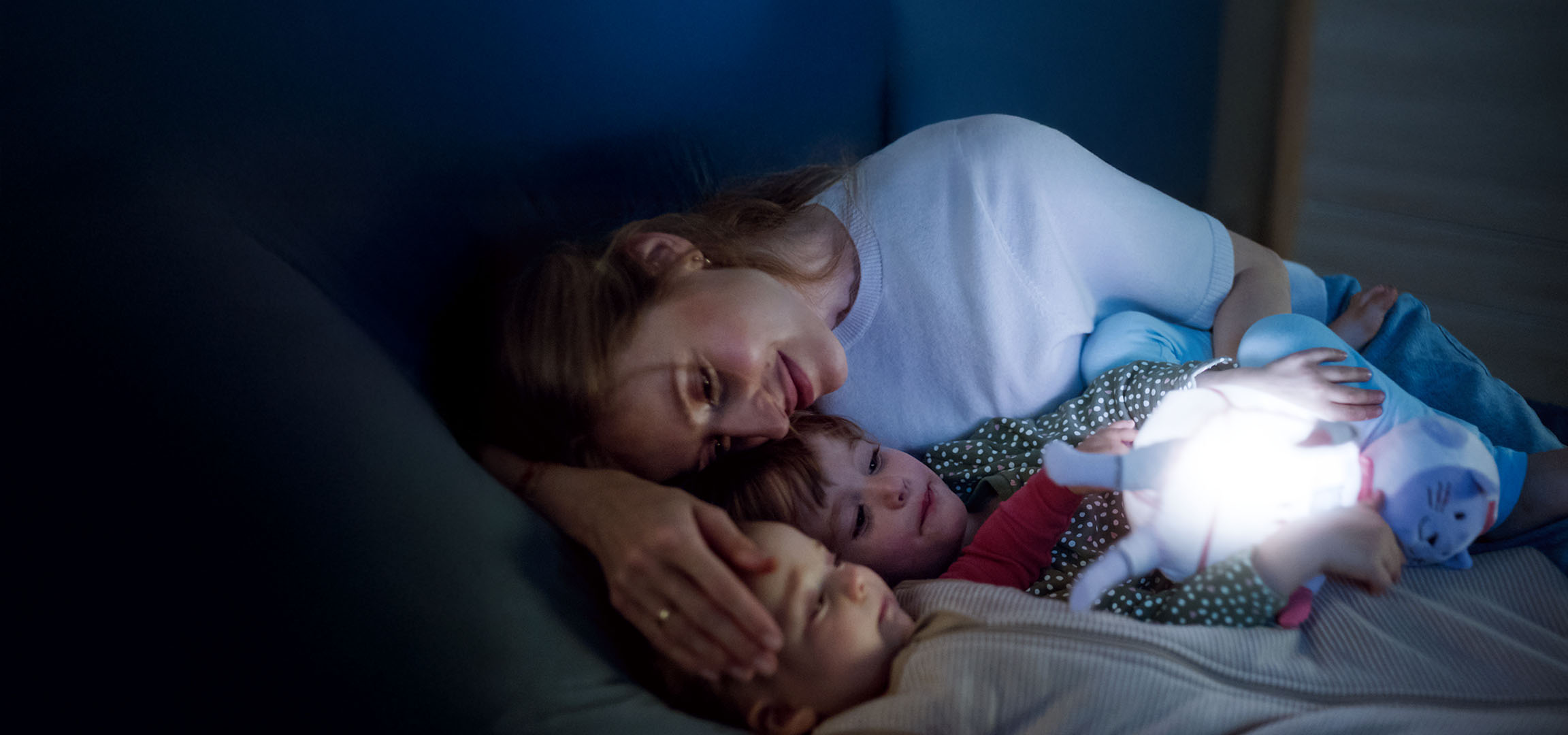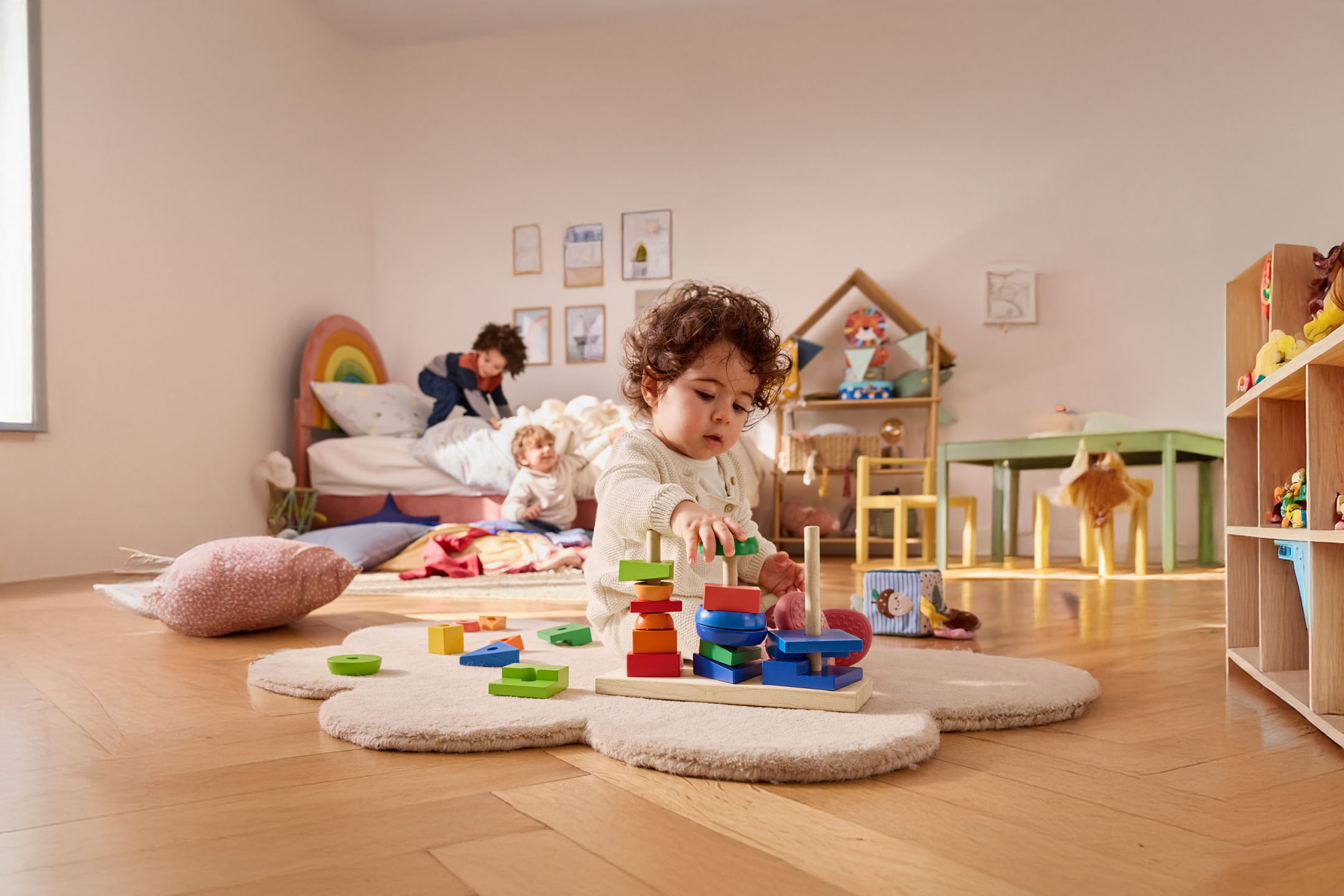Help, the baby isn't sleeping! – Sleep tips for little night owls
A baby needs a lot of rest. A good, undisturbed sleep is important to process the countless impressions of the day. But that is often easier said than done. What to do if your child just doesn't want to sleep? Here you will find the practical recommendations and tips for falling asleep for your baby.
How much sleep does a baby need?
In the first year of their life, babies develop at an incredible pace. And they sleep a lot: a newborn sleeps for around 16 to 18 hours a day, evenly distributed across around five sleep phases. Just a few weeks after birth, the baby develops a certain rhythm with shorter sleep phases during the day and longer ones at night. However, this does not mean that the baby will sleep through the night – it is only at around six months that the baby manages to sleep for around six hours at a time.

There is one thing you should always be aware of: your little darling is an individual little person and doesn't function according to the textbook. Maybe your little one needs less sleep than average. They may also sleep wonderfully as long as they are near you. Or they suddenly no longer fall asleep on their own, even though they were previously the easy sleepers. This is all completely normal – they are constantly developing, and so their sleeping habits are constantly changing.
But you can do something to make it easier for your little darling to fall asleep.
Creating the routines and rituals
A baby doesn't necessarily fall asleep when you put it in its bed, but rather when it is tired. You can support this with routines and rituals. A structured daily routine creates the habit and security. Evening rituals such as bathing, reading aloud, singing and cuddling help your child to calm down and prepare them for sleep.
To encourage a regular day-night rhythm, you can put your little one to bed at the same time every evening. A common evening ritual and a quiet, darkened sleeping environment help with this.
Creating the perfect sleeping environment

The night light
The best way to help a baby fall asleep is to provide a safe and comfortable sleeping environment, coupled with a bedtime routine. A small night light and a slightly open door ensure that your little one does not feel left alone when lying in their bed. What else is needed for the child to feel safe and secure?

The bed
Your baby probably doesn't sleep equally well everywhere. Newborns in particular miss the natural boundaries they experienced in the womb. Alone in a large cot, they often feel a bit lost and have difficulty relaxing. Small baby beds, bassinets and cradles that offer a barrier are better suited. But even larger cots can initially be made smaller with a baby nest. A pretty canopy also creates a barrier at the top and thus provides a sense of security.
Your baby may also not sleep well when left alone at night. You can provide the desired physical closeness with the bedside bassinet. It is placed with the open side next to the parents' bed so that mom and child sleep right next to each other. This has another advantage: Breastfeeding mothers no longer have to get up at night, but can simply take the baby over to them when needed.

Sleeping bag or blanket?
For safety reasons, a sleeping bag is recommended for babies in their first year of life. The reason: Babies do not sleep peacefully, but also kick their arms and legs while they sleep. A sleeping bag sits securely and doesn't slip, whereas a blanket can quickly be kicked off or – and this is when it becomes dangerous – pulled over the face.

Music box, mobile and night light
Music boxes, mobiles, and night lights aren't just decorations; they can also be great sleep aids for your baby. Playing a music box can also be part of the evening routine – for example, right before the lights are turned out. Through daily repetition, the baby quickly learns that it is now bedtime. The gentle dancing of the figures in a mobile engages the eyes, but has a calming effect. A dim night light that breaks up the darkness in the room helps the baby to orientate itself, especially if it wakes up during the night.

A cuddly toy as a friend and protector
Many children develop a close bond with a cuddly toy that accompanies them everywhere, even at the early age. The emotional bond with a cuddly friend ensures that your little darling feels protected and safe in its presence, even at night. This can help them fall asleep and ensure that they find it easier to sleep again, even if you are not in their immediate vicinity.


